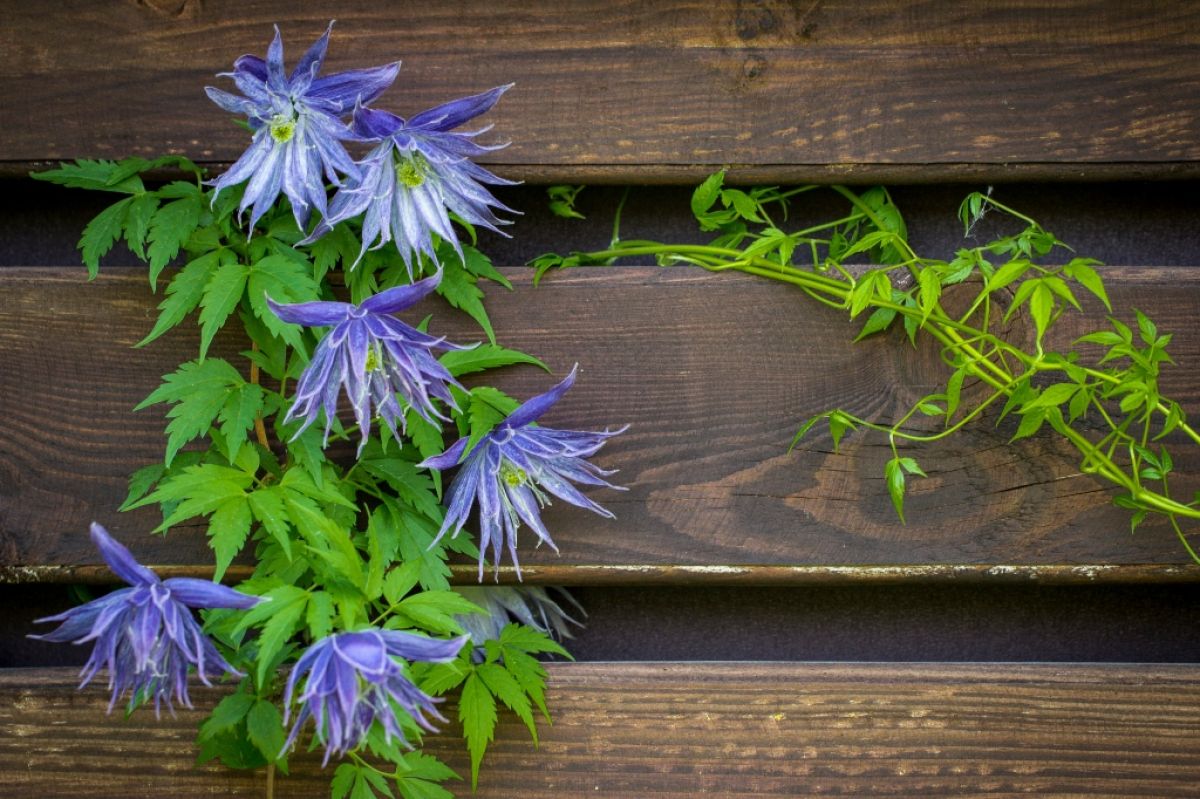A Greek botanist cultivated clematis as early as 50 A.D. The name is from the Greek word klema meaning vine.
During the Elizabethan reign in England the native clematis was known as Virgin's Bower, and another name was Hedge Feathers because of the fluffy seed heads.
The Asian clematis reached Europe from Japan in 1776. In the 1820s, Lady Amherst, the wife of the Governor of India, brought the white clematis 'Montana' home to England. The Englishman Dr. Ward, who invented the Wardian glass cases for transporting plants, was responsible for the large number of clematis from China sent to England by the plant hunter Robert Fortune.
In 1858, Jackman's nursery in England produced the spectacular ‘Jackmanii’* clematis, which is a rich purple and very popular still today. The Jackman family produced hundreds of varieties as the craze for producing clematis swept through Europe. Not only were the flowers admired, but also the tough twining stems of this plant.
Famous garden designer Gertrude Jekyll used clematis to romp over other plants that had finished their bloom season before the clematis began blooming. Ellen Willmott spent a fortune designing and growing an English garden filled with different types of clematis.
There are so many lovely varieties available today. Even a single bloom floating is a bowl looks perfect. Sadly, the deer seem to be attracted to them. too.
This is Moya Andrews, and today we focused on climbing clematis.










